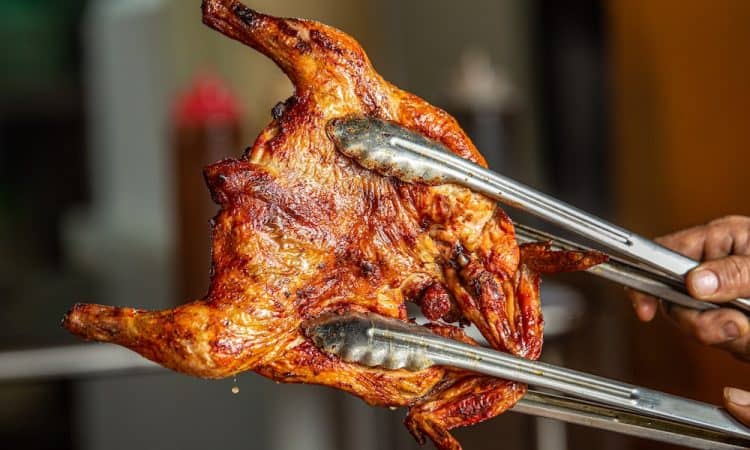The allure of BBQ isn’t limited to briskets and ribs; poultry has its revered spot in the pantheon of smoked meats. Chicken and turkey, with their juicy interiors and potential for crispy skins, can shine brightly when handled correctly in a pellet smoker.
However, achieving that perfect balance of smoke, flavour, and texture is an art. Let’s get into the techniques that can help you reach poultry perfection on a pellet smoker.
1. Selection is Key
- Chicken: Always opt for fresh over frozen when possible. The fresher the chicken, the better the flavour and texture. Consider buying organic or free-range chicken, as they often possess a richer taste due to their diet and free-range lifestyle.
- Turkey: For those special occasions, you would want a turkey that’s plump and has a firm texture. Fresh turkeys are preferable. However, if you have a frozen one, ensure it’s fully thawed in the refrigerator for a few days before smoking.
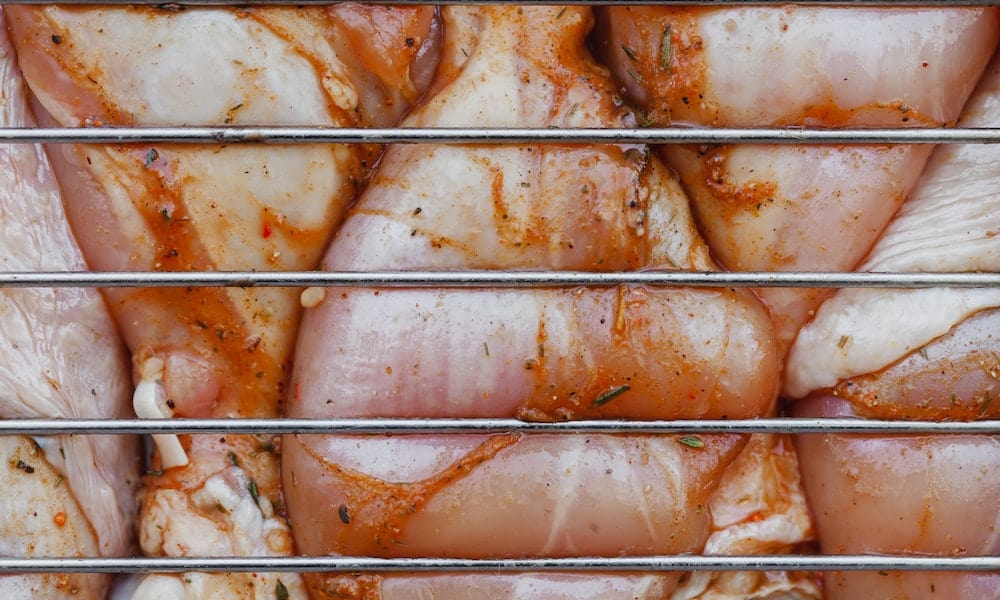
2. Brining: The Secret Weapon
Brining is a technique wherein poultry is soaked in a mixture of salt, water, and various flavourings to enhance its moisture content and flavour. Especially for turkey, which can dry out over long cooking times, brining is crucial.
- Basic Brine Recipe: Mix 3.8 litres (1 gallon) of water with 240 grams (1 cup) of kosher salt, 120 grams (1/2 cup) of brown sugar, and your choice of herbs and spices. Immerse the bird completely and refrigerate for a few hours (for chicken) or overnight (for turkey).
3. Seasoning and Rubs
- Chicken: A simple rub of salt, pepper, garlic powder, onion powder, and capsicum/paprika powder can do wonders. However, feel free to get creative with herbs like rosemary, thyme, and oregano.
- Turkey: Given its size, turkey can handle more robust flavours. Consider adding ingredients like dried mustard, cayenne, or even a touch of brown sugar to your rub.
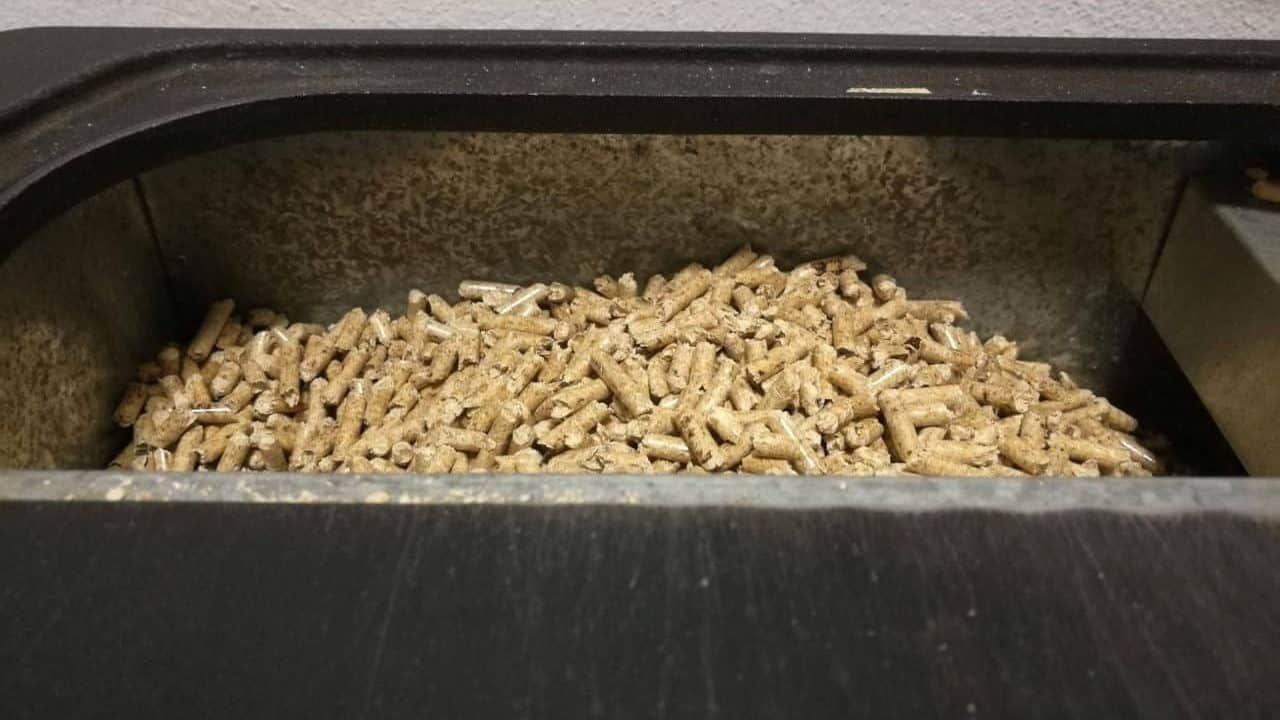
4. The Right Wood Pellets
Different wood pellets impart different flavors. For poultry:
- Chicken: Fruitwood pellets like apple, cherry, or peach give chicken a subtle, sweet smokiness.
- Turkey: A blend of fruitwood and stronger woods like hickory or oak can complement turkey’s robust flavors.
5. Preheat Your Pellet Smoker
Before placing your poultry on the grill, ensure that your smoker is preheated to the desired temperature. For chicken, a temperature of 107°C-121°C (225°F-250°F) is ideal. For turkey, start at 107°C (225°F) and increase to 135°C (275°F) during the last couple of hours.
6. Positioning the Bird
- Chicken: Whether you’re smoking a whole chicken or parts, ensure they are spaced out evenly on the grill. For a whole bird, consider flattening it for even cooking.
- Turkey: Place the bird breast-side up. This positioning ensures that the dark meat, which takes longer to cook, is closer to the heat source.
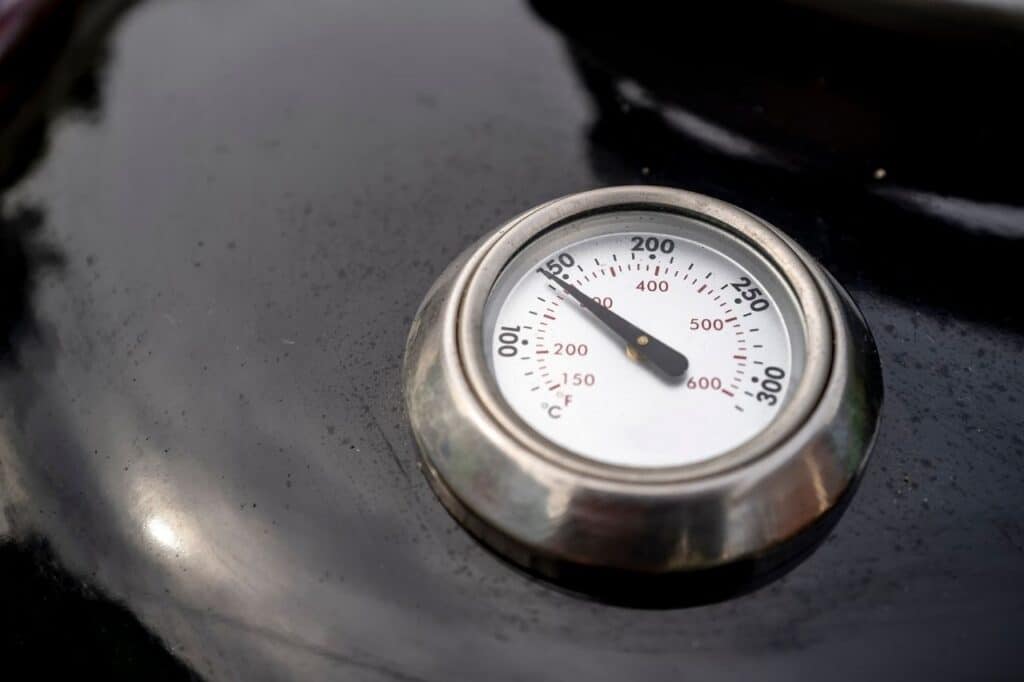
7. Monitoring Temperature
Using a good meat thermometer is essential. You’re aiming for:
- Chicken: An internal temperature of 74°C (165°F) for the breast and 79°C (175°F) for thighs.
- Turkey: A consistent internal temperature of 74°C (165°F).
8. Resting is Essential
Once off the grill, let the poultry rest. This pause allows juices to redistribute. Rest chicken for 10-15 minutes and turkey for 20-30 minutes.
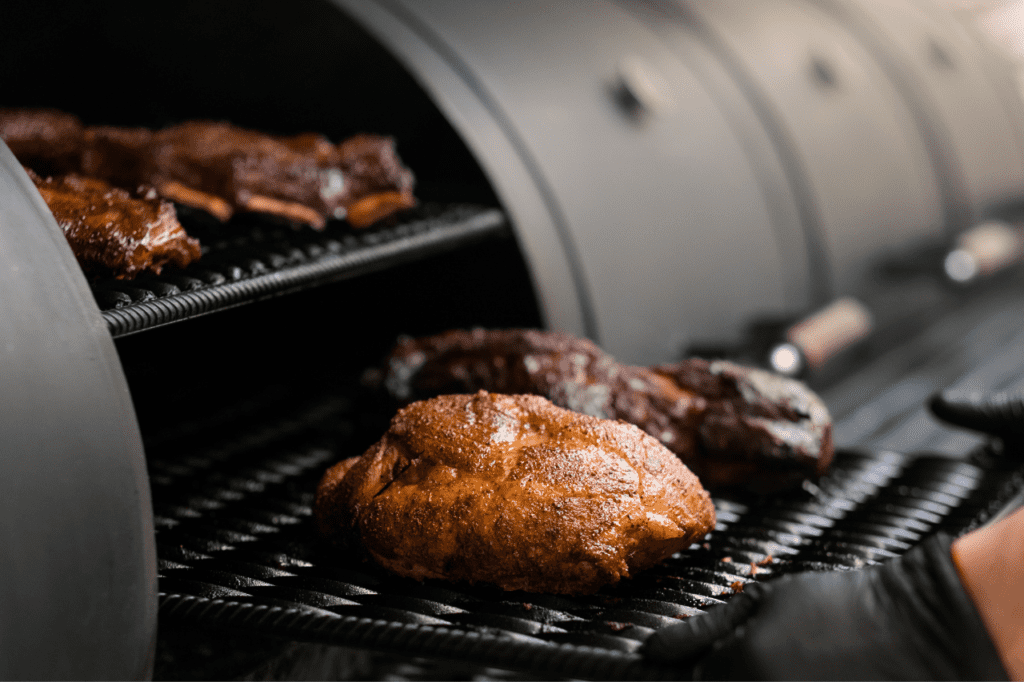
9. Consider a Finish on High Heat
To achieve crispy skin, especially for chicken, you might want to finish it off on a grill at high heat for a few minutes. It crisps up the skin and adds a delightful texture.
In Conclusion
Smoking poultry on a pellet smoker can offer a culinary experience like no other. With the right techniques, you can unlock flavours and textures that will have your guests coming back for seconds and thirds.
Whether it’s the subtle sweetness of a cherry wood-smoked chicken or the hearty depth of a turkey smoked with hickory, the results can be tantalisingly delicious.
Remember, BBQ is as much about the journey as the destination, so enjoy every moment, from preparation to the final bite!
- How to Cook Poultry (Chicken & Turkey) on a Pellet Smoker - August 10, 2023
- 6 Ways to Get Beautiful Smoke Rings with a Pellet Smoker - September 29, 2021
- Using a Smoker in the Rain (Here’s how) - August 19, 2021

